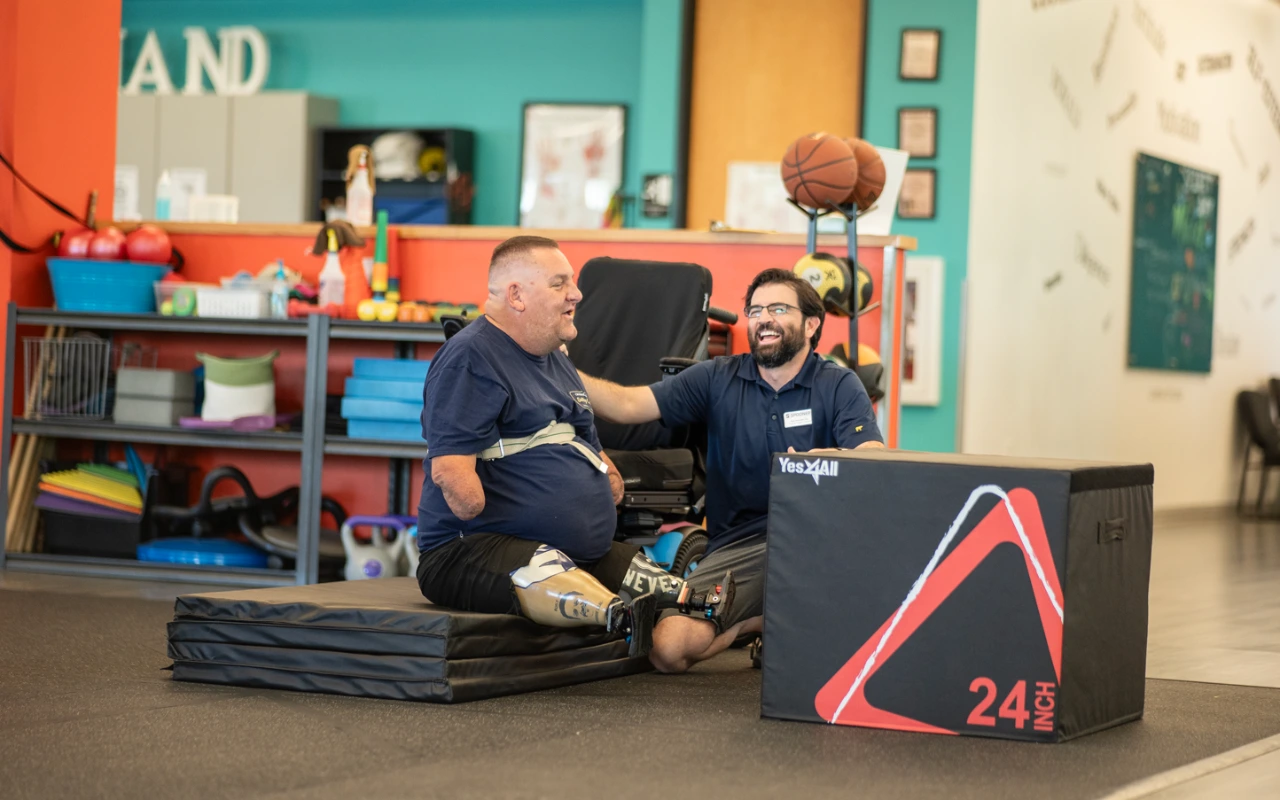Facing the challenges of limb loss, both physically and emotionally, can be overwhelming. Physical therapy provides personalized support and practical approaches to help ease the transition. The goal is to assist with pain management, improve mobility, and help individuals regain confidence to move better and feel better. We’re sitting down with Mark McGovern, PTA, of Spooner Glendale to learn how he helps individuals with limb loss each day in physical therapy.
How can physical therapy help amputees and those who’ve experienced limb loss manage pain and improve their mobility over time?
Mark McGovern, PTA: Physical therapy is important for helping individuals with limb loss stay active and manage discomfort. One of the main focuses is to maintain flexibility in areas that might become stiff or restricted, which can be called “general maintenance”. When muscles and tissues tighten, it can make using prosthetics or assistive devices more challenging. By keeping things mobile, we help ensure that prosthetics can be used more effectively.
Another important aspect is building confidence in movements that individuals with limb loss might be hesitant to try on their own at home without the right tools or support. Often, they feel safer in a controlled environment with the proper support and guidance from a physical therapist, which allows them to tackle more challenging activities with support. This combination of physical support and confidence-building helps them implement these steps into their daily lives safely.
How do you tailor physical therapy to help individuals with limb loss regain their independence and adapt to daily life?
Mark McGovern, PTA: No two people with limb loss have the same needs, so each therapy plan must be customized. For example, patients who are recent amputees might still be adjusting to their prosthetic or learning to maintain their balance, while others may be further along and looking to achieve more complex goals like returning to work or sports.
I will start by assessing where they are at the moment. For someone who has been using a wheelchair, before we start walking, can we stand? Can we control balance in a standing position before walking, and how do we feel moving and reaching for things while standing? For someone who uses a walker, can we slowly transition to not using the walker, or move on to using another device entirely? I want to know, what are the things we are trying to get back to? What is the work we want to return to, or sports we want to get back to playing? All these things factor into the individual care plan so that I am helping my patients achieve their goals.
How do you address the emotional aspects of recovery in physical therapy for amputees, and what role does this play in their overall rehabilitation?
Mark McGovern, PTA: The emotional side of recovery is huge. We focus on making sure patients know they’re not alone, whether by connecting them to support groups or helping them gain some perspective by meeting others who’ve gone through similar experiences. I like to keep things light, too—realistic expectations are important, but so is laughter. Each person is different; some may need a more serious approach, while others appreciate a bit of warmth and levity to ease the process. We can discuss what their goals are and connect them with information like the different prosthetic companies, who also have support resources available. We want patients to know that they can get back to doing what they love and that, ultimately, this is a safe and supportive environment with a team that truly cares!
Learn more about how Spooner’s Amputee & Limb loss Rehabilitation can help care for those individuals with limb loss. If you would like to schedule an appointment with Mark, schedule an appointment today!

